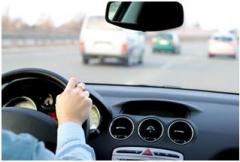- Author: Svenja Borchers, TWT
- Contact details: svenja.borchers@twt-gmbh.del
Imagine you are driving a car. You are on the highway, take your hands off the steering wheel, which signals the car to drive autonomously. You lean back and while your car overtakes several other cars and subsequently steers you back to the right lane. At your preferred speed of 140 km/h you actively observe the scene and your car’s behaviour and are ready to take back the control over your car at any time. Suddenly, one of your children in the back seat starts to cry; she seems to be sick. You shortly turn around trying to help her relying on the car’s autonomous function. While you are looking at the street, trying to visually attend to the traffic, you think about how you can help your daughter and you weigh several possibilities in your mind assessing the pros and cons of each alternative. Your car notices that you are distracted, not only visually but also cognitively. Therefore it now abstains from overtaking and keeps somewhat more distance to the car in front in order to assure more reaction time in case you abruptly need to step in into the driving activity.
How did your car notice that you were cognitively distracted at that moment and how could it use this information to ensure a safer driving?
TWT GmbH Science & Innovation is investigating the question how to detect the level of cognitive distraction of the driver in real-time, with the aim to develop a computational cognitive distraction detection model. Distraction is inattention to a primary task (e.g., driving), due to the presence of a triggering event or activity, (e.g., a crying child in the back seat or a conversation with a co-passenger). When people perform two complex tasks simultaneously, these tasks might be competing for cognitive resources available. The brain then shifts its focus, which might also occur unconsciously. Driving performance can thus be affected when filtered information is not encoded into working memory and therefore critical warnings and safety hazards can be missed (Figure 6). This kind of cognitive distraction of the driver might visually not be obvious and therefore sophisticated technology is necessary for its detection.
In order to detect these subtle differences in everyday driving situations, TWT analyses in-car audio signals (i.e., voice data) and combines this information with head pose and face tracking information as well as behavioural driving data (in case the driver him/herself is driving and not the autonomously driving car).
In a number of experiments using a driving simulator, behavioral driving, video and audio features correlating with the level of the driver’s cognitive distraction are collected (Figure 1). In the first phase, subjects have the task to solve mathematical problems while trying to keep the driving distance to the pace car constant. From these experiments, specific features will be extracted that have a high prediction rate for the distraction degree of the driver. E.g., blink rate is a promising feature, because it is known to increase when someone is cognitively distracted. These features will be used to train the model in estimating the degree of the driver’s distraction. In the second phase, we will train and test the model during conversations of the driver with co-passengers during active driving. This more natural condition will enable a more thorough acoustic analysis based on features such as the number of speakers, information about the driver’s involvement in the conversation (e.g., whether the driver him/herself is speaking), and possibly the degree of emotional content.
The overall aim of the cognitive distraction model is the development of a mobile user profile computing the individual distraction degree. Additionally, the model can be applied in other systems. For example, the Adapted Automation AdCoS developed by Ibeo adapting it’s driving style in order to drive less risky when the driver is distracted, by leveraging the model herein described and developed by TWT in the Driver Analysis module. Adapting the behaviour of a system to the operator’s cognitive state enhances the cooperation between humans and machines and should lead to less accidents and overall increased safety on the road.

Figure 1. The TWT driving simulator, used for experiments to assess features correlating with the cognitive distraction degree of the driver
Read more:

